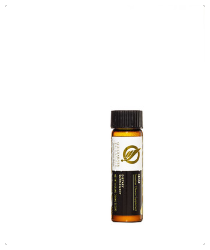 |
|
Click to enlarge image(s)
|
PLEASE CALL 707-824-8381 to order this product.
IMD - 6 gram bottle by QuickSilver Scientific
IMD (6 gram) Intestinal Cleanse Quicksilver Scientific’s sophisticated detoxification supplement that optimizes the natural removal of metals through the intestines. This proprietary compound, IMD Intestinal Cleanse, supplements the natural action of glutathione in the intestines. IMD delivers insoluble thiol groups to bind and remove heavy metals accumulated in the intestines and to directly quench free-radicals. IMD’s actions enhance Phase III Detoxification – the system of transporters leading out of the body.
• Binds mercury and other heavy metals in the intestines and escorts these harmful contaminants out of the body.
• Intercepts methylmercury and other metals trapped in enterohepatic circulation. Binds and removes intestinal heavy metals.
• Leads to lowering of blood mercury levels, allowing organ and tissue bound mercury safely to drain into the blood at a natural rate.
• Improves the body’s natural detoxification ability by quenching free radicals and stopping metal-catalyzed freeradical reactions which can lead to inflammation and cause down-regulation of detox transporters (Phase III transporters — OATs, cMOAT, MRPs, etc).1
• Fortifies the link between the intestines and the immune system. Active Chemistry of IMD The Intestinal Metals Detox (IMD) is a proprietary product that consists of highly purified silica with covalently attached thiolic metalbinding groups. Both the silica base and the binding agents are GRAS (Generally Recognized as Safe) for use in food. The specific chemistry of the compound has several benefits over other detoxification remedies.
• The active binding groups out-compete other compounds for metals in the intestines.
• Because IMD does not enter the bloodstream, it will not lead to redistribution or surges of mobilized metals that can lead to potential kidney/liver overload. In fact, preliminary data suggests increased liver function in some patients, as measured by changes in bilirubin levels.
Eliminating disruptions in natural body–wide detoxification
Intestinal inflammation inhibits elimination of toxins by causing a strong down-regulation of the body’s natural detoxification pathways.
1 Ironically, exposure to certain toxins contributes to intestinal inflammation.
For example, the corrosion of amalgam mercury results in mercuric mercury (HgII, also called inorganic mercury) release.
When swallowed with saliva, HgII can cause intestinal inflammation and initiate this negative feedback.
2 In addition to inflammation, it has been demonstrated that a build up of metals alone slows the transport proteins.
3 The data suggests that continuous removal of metals from the intestines is essential for the proper daily functioning of natural detoxification processes. The continuous removal of metals is also critical for a successful practitioner-directed detoxification program.
Recommended Usage: Begin with one–half scoop for 3 days to test tolerance.
Once tolerance is established, use one full scoop per day in 4-6 oz water with 2-6 pumps Etheric Delivery Vitamin C with R-Lipoic acid or other source of soluble vitamin C. Alternately, the product combines well with Etheric Delivery EDTA with R-lipoate. Slowly titrate up the dose over several months to 3 or 4 doses per day. Use product in cycles of 5-days-onon/2-days-off or 10-days-on/4-days-off. Some very sensitive individuals need to start with even less than one-half scoop.
1. Kalitsky-Szirtes, J.; Shayeganpour, A.; Brocks, D. R.; Piquette-Miller, M., Suppression of drug-metabolizing enzymes and efflux transporters in the intestine of endotoxin-treated rats. Drug Metabolism and Disposition 2004, 32, (1), 20-27. 2. Nadarajah, V.; Neiders, M. E.; Aguirre, A.; Cohen, R. E., Localized cellular inflammatory responses to subcutaneously implanted dental mercury. Journal of Toxicology and Environmental Health 1996, 49, (2), 113-126(14). 3. Wortelboer, H. M.; Balvers, M. G. J.; Usta, M.; van Bladeren, P. J.; Cnubben, N. H. P., Glutathione-dependent interaction of heavy metal compounds with multidrug resistant proteins MRP1 and MRP2. Environmental Toxicology and Pharmacology 2008, 26, 102-108



